This post may contain affiliate links. Please read my disclosure policy.
Ever wondered How to Cook Pasta in the Instant Pot? We’re sharing everything you need to know to make virtually any shape of pasta quickly in the Instant Pot!
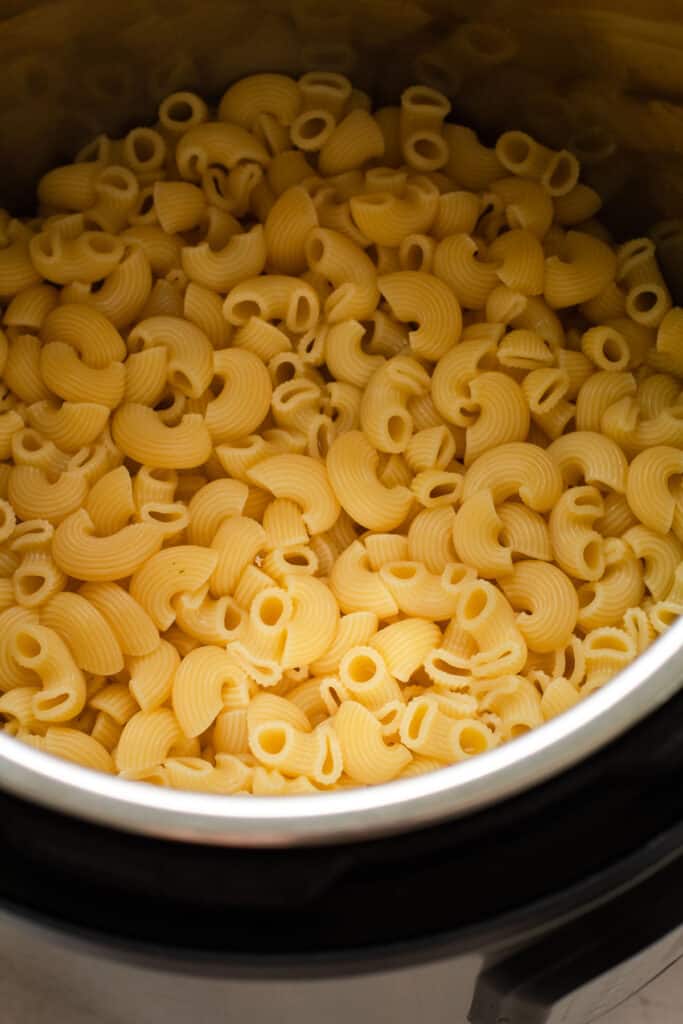
Instant Pot Pasta
Whenever we make something in the Instant Pot, we always ask ourselves this question: Does cooking this in the Instant Pot improve upon the traditional method, either by time or final result, at all? And if the answer is yes, then we happily will use our Instant Pot for it. Cooking pasta in the Instant Pot offers a great alternative to heating up the kitchen with boiling water (and straining the pasta), just takes one push of a button, and it can result in some pretty amazing one-pot pasta dishes. Does that mean we will never boil pasta on the stovetop again? No. But this method is great to have in your back pocket for certain pasta dishes and easy weeknight meals.
Plus, our method is a one size fits all recipe that can be used for nearly any shape or type of pasta (mostly, more on that below)!
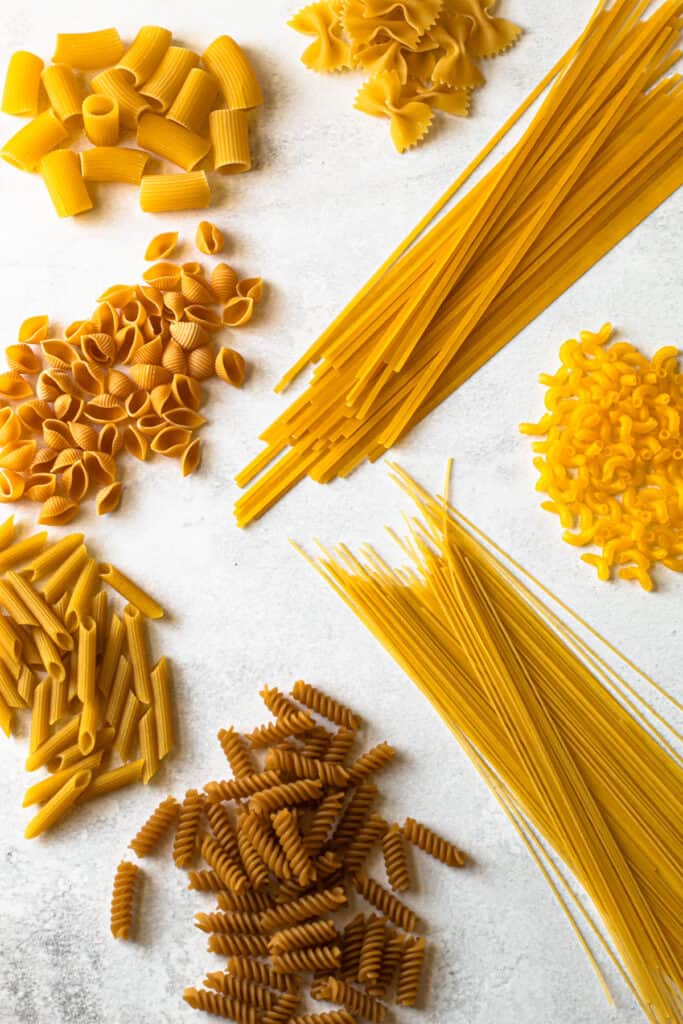
Cooking Any Type of Pasta in the Instant Pot
We wanted to create a recipe that you can use for cooking any type of pasta. During our research over the last few months, we’ve tried out at least 14 different types of pasta using this recipe. We’ve had large degrees of success with almost all of them, with some variables.
Before we go into this, we have a caveat: What we’ve learned over many years of developing recipes in the Instant Pot is that despite this appliance claiming it works the same across the board, we’ve found that not to be true. So while we’ve had great success using this method of cooking nearly any type of dried pasta, you may need to tweak our recipe a bit based on your specific Instant Pot or other brand of pressure cooker.
We’ve tried this recipe with three different types and sizes of Instant Pots with success, but be open to the idea that you may need to slightly tweak this recipe to get your exact desired results for whatever recipe you are using. We really wanted this recipe to be fool-proof but in the end there are too many variables. The variable here is the altitude of where you live, the type of pasta you are using and your specific Instant Pot. But we are confident that this recipe is pretty close to perfect, and has worked for so many different shapes and types of pasta for us.
However, we’re sharing this recipe because we’ve found it infinitely useful for making pasta, and think you will too.
Regular wheat pasta cooks the most consistently in the Instant Pot. Gluten-free pasta can vary wildly in terms of the ingredients (ranging from corn or soy flour, to brown rice or quinoa flour). We’ve found the biggest issue with cooking the gluten-free pasta has been excess starch escaping from the vent. But don’t worry, we’ve come up with a method of dealing with this that we dive deeper into below.
Our Method of Cooking Pasta
Our method for cooking any type of pasta in the Instant Pot is a bit different, and we’ll explain how we came to it below. But first, here is our basic method:
- Add dried pasta and water to nearly cover the pasta. A few pieces of pasta sticking above the water line is ok. You don’t want to cook it in too much water because that lengthens the time it takes to heat (which means it van overcook) and that can become a problem during the pressure release (see more on this below).
- Set the Instant Pot to the cooking time of 0 minutes, and yes this is an actual cooking time and not a typo!
- Once it comes up to pressure and hits 0 minutes, let the pressure naturally release for 3 minutes. This reads as L 00:03 on the Instant Pot.
- Then release the remaining pressure manually.
So what’s the science behind this? It’s simple: the pasta is already cooking during the time it takes to come up to the pressure, and the pasta continues to cook when the pressure cooker clicks off. The reason we do it this way is to minimize the Instant Pot from “boiling over” with starch. This looks like starch spewing out of the pressure release knob.
Excessive starch was the biggest issue we encountered with cooking pasta in the Instant Pot, especially gluten-free pasta. What we know is that when the pressure is released, the water rapidly boils up, and with it all the starch. By using our method of cooking it until zero minutes, and then letting it naturally release for 3 minutes (while the pasta continues to cook), the boiling isn’t quite as rapid when we release the pressure, which curbs the starch from shooting out. Though, it still can happen depending on the type of pasta. But have no fear, keep reading for our solution to that.
How to Stop Starch from Shooting Out
As we mentioned above, our primary goal with this method fo cooking pasta in the Instant Pot is to prevent starch from escaping during the release, and spraying starchy liquid all over your kitchen. In fact, it was one of the first times I cooked gluten-free pasta in the Instant Pot when I did not know how to react when the starch started spewing everywhere in my kitchen. Everything in the vicinity of my IP was covered in a starchy slime, and I feared that my Instant Pot was ruined since so much had come out from the release valve. Luckily, a few cycles through the dishwasher and taking apart the valve to clean it saved it.
But how to prevent the starch from escaping in the future? The first step was coming up with this method for cooking it which reduces the amount of starch that escapes to begin with. It truly makes a difference. But the next step was stopping the starch from coming out, without overcooking the pasta, if it does occur.
If a lot of starch starts to spew out of the pressure release valve, using a towel, carefully shut the valve, and let it stay closed for 20 seconds. After 20 seconds have passed, you can release the valve again. You can repeat this process as necessary until all the pressure has released. This helps control the temperature and rapid boiling with the Instant Pot, which reduces the starch from escaping.
One other trick is to halfway open the valve, so that it only slowly lets the pressure release. Slowing the release of the pressure helps keep the starch from bubbling up.
Why Can’t I Just Cover the Release Valve with a Towel?
If you are asking this, you likely haven’t read your manual. While it might be tempting to let the pressure just release while covering the valve with a towel to stop the starch from going everywhere, the Instant Pot instructional manual explicitly states that you cannot for any reason cover the pressure release valve with a towel, for safety purposes and for the health of your Instant Pot. So that is the reason for coming up with a way to deal with the escaping starch!
To Drain or Not to Drain
And here is where the magic lies with Instant Pot pasta: you don’t always have to drain the pasta! Using this method for cooking pasta results in most of the water being absorbed into the pasta. When it’s finished there will be just a little bit of water leftover. You can then toss your pasta with your sauce, or make one directly in the Instant Pot such as Mac and Cheese.
However, you can drain the pasta too. And you should if your recipe calls for it, such as a Macaroni Salad.
One word of caution about cooking pasta made from different grains, such as a brown rice flour: When you are making non-traditional pasta, the leftover water might be too starchy and sticky to leave in a recipe. In that case, rinsing and draining the pasta will do the trick of eliminating that less-than-desirable starchiness.
Troubleshooting Tips
So you’ve used our method of cooking pasta in the Instant Pot, but still ran into trouble. While a lot of this information is already covered above, we’ve condensed everything here for an easy read.
The pasta spewed out starchy water during the manual release! This can happen, depending on the type of pasta you used and a few other factors. To control the release of the starch from your pressure valve: using a towel, carefully shut the valve, and let it stay closed for 20 seconds. Then, you can release the valve again. If in a few seconds or a minute it begins again to spew the starch, repeat the process of closing the valve for 20 seconds, and then reopening it. This helps control the temperature and rapid boiling with the Instant Pot, which reduces the starch from escaping.
The pasta stuck together! Make sure to stir the pasta immediately after you release the pressure. This prevents any sticking from happening.
The pasta is overcooked! Yes, we’ve had this happen with a few gluten-free pastas that had trouble with the natural release getting delayed due to excess starch release. Unfortunately, there is no going back from overcooked pasta. We made note of those brands and shapes and didn’t use them again in the Instant Pot. We hesitate to share them because we are not convinced they have a universal problem cooking in ALL Instant Pots, but merely didn’t work in one out of our 3 different tests. As stated above, this recipe works for nearly all pasta, but it can vary depending on your type of pasta and Instant Pot.
That pasta is undercooked! We’ve never run into undercooked pasta by using this method of cooking pasta. The closest we came was to having al dente thicker pasta, such as rigatoni. If you don’t like al dente pasta, add an extra 2 minutes to the natural pressure release in the future to that specific type and brand of pasta. If you are looking to save your pasta currently, you could add in a bit more water and press the saute button and boil it until it’s cooked to your desired texture.
The pasta has in super sticky gooey water! Depending on the type of pasta you are using, this can happen. Usually, with gluten-free pasta made with alternative flour, the leftover water can have an undesirable starchy liquid. One way of telling if this will happen is to read the instruction on the pasta box. If it tells you to rinse, then you’ll want to rinse!
Recipes to Use for Instant Pot Pasta
- Instant Pot Mac and Cheese
- Classic Macaroni Salad
- Creamy Mushroom Ricotta Pasta
- Italian Pasta Salad
- Gluten-Free Chicken Caesar Pasta Salad
- Gluten-Free BLT Pasta Salad
Watch the Video
If you like this cooking tutorial, check out these others:
- How to Cook Frozen Chicken Breasts in the Instant Pot
- How to Make Oat Flour
- How to Roast Peppers
- How to Cook Bacon in the Oven

How to Cook Pasta in the Instant Pot
Ingredients
- 12 to 16 ounces dried pasta
- Big pinch of salt
- Water
- 1 tablespoon olive oil optional, see note
Instructions
- Add any pasta (at least 12 ounces but no more than 16 ounces) to the liner of your Instant Pot. Add enough water to nearly cover the pasta (a few pieces of pasta sticking above the water line is ok). Add in salt, and oil, if using.
- Close the lid and set the valve to sealing.
- Cooking on high pressure for 0 (zero) minutes with a 3-minute natural release (see note about gluten-free pasta).
- Release the pressure. If at any point starchy liquid starts to come out of the knob, close the knob for 20 seconds. Then release the pressure again. Repeat closing the knob if necessary until all the pressure has been released.
- Stir the pasta immediately and use as desired. You can drain the pasta and use in any recipe, or you can keep the starchy water to use to help make a sauce for the pasta.
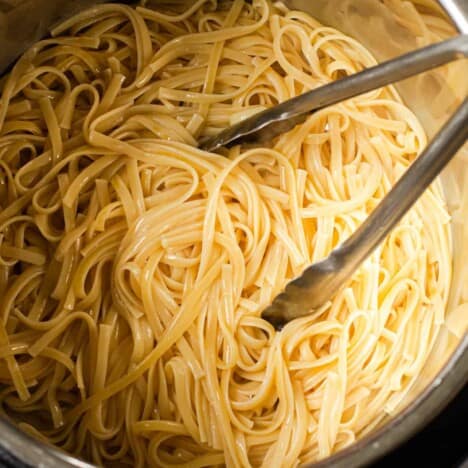
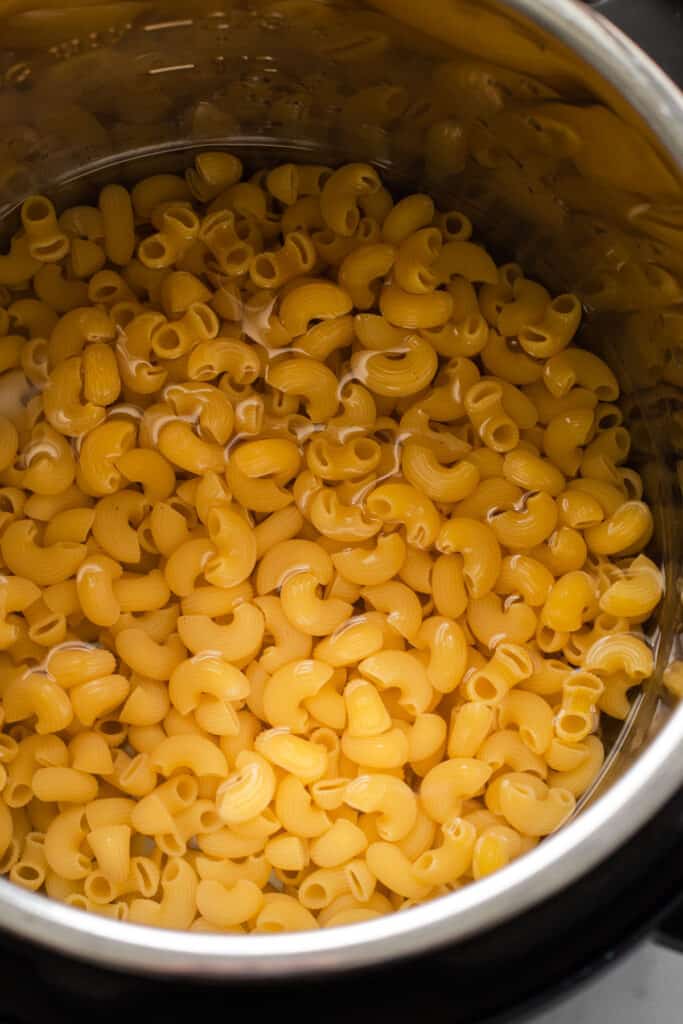
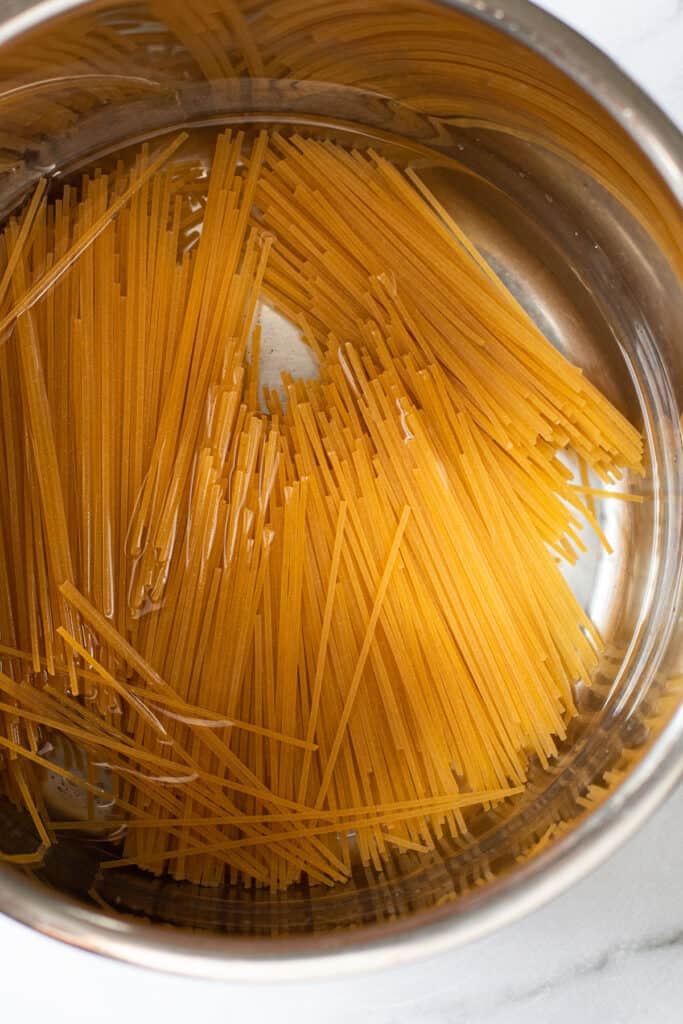
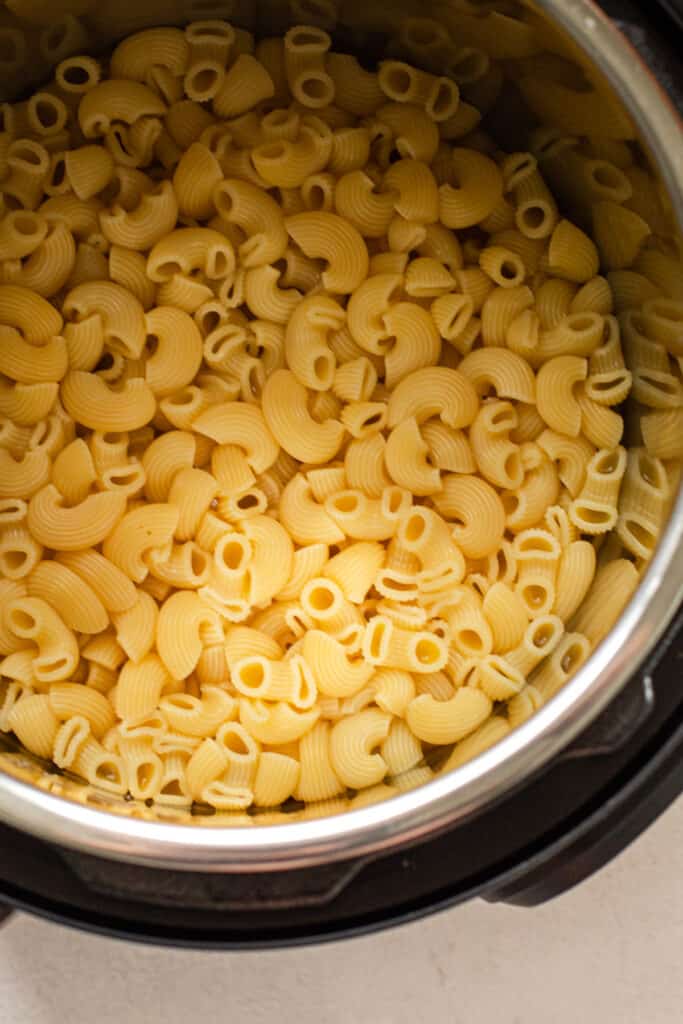
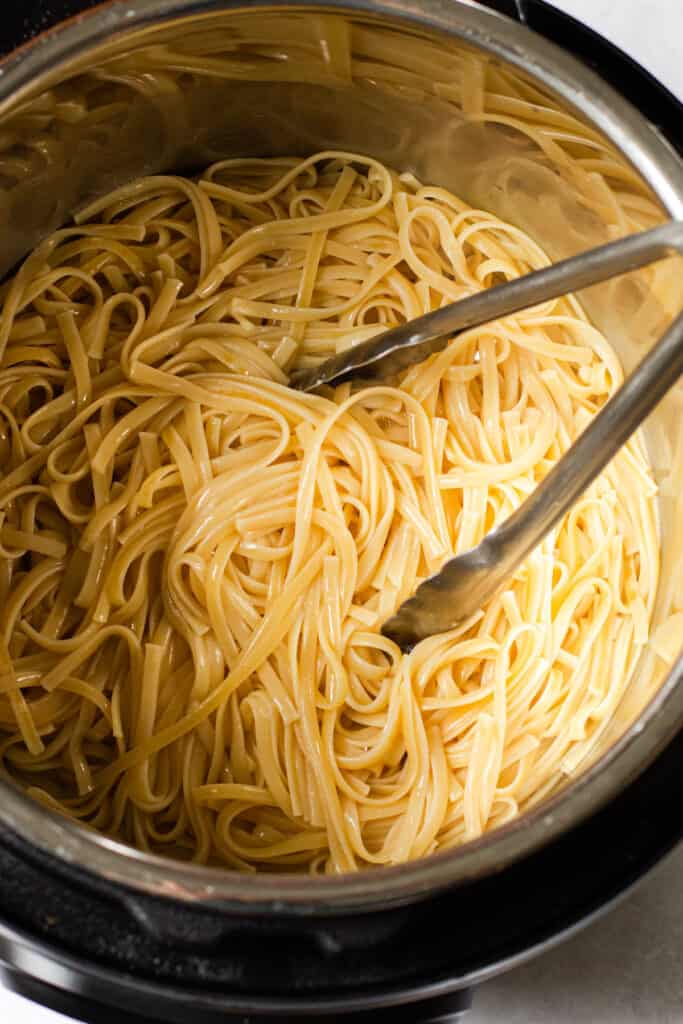
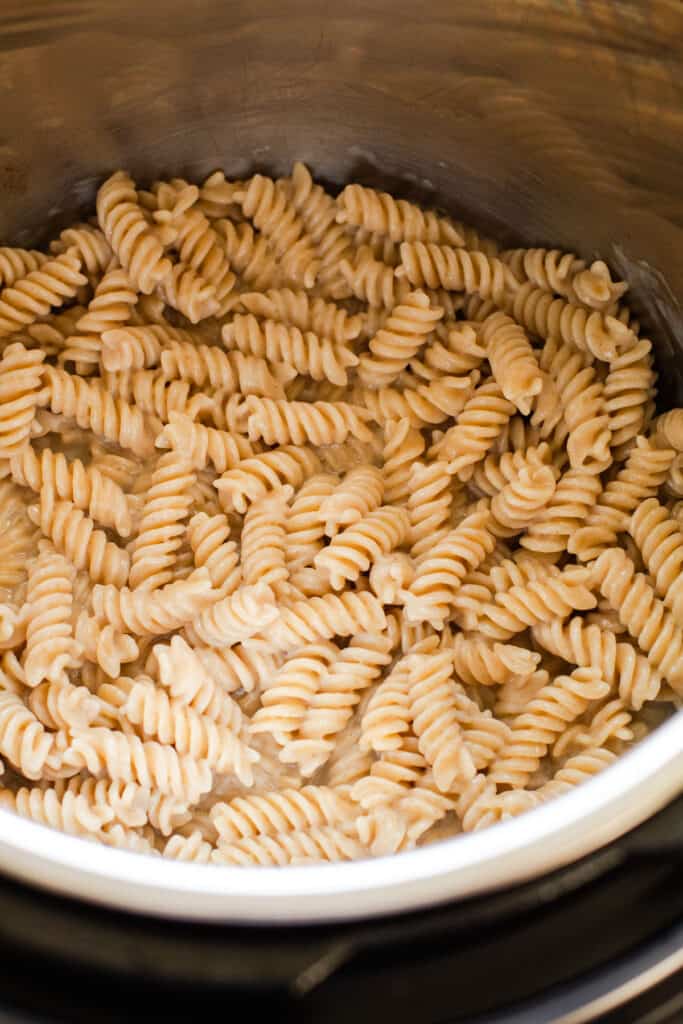
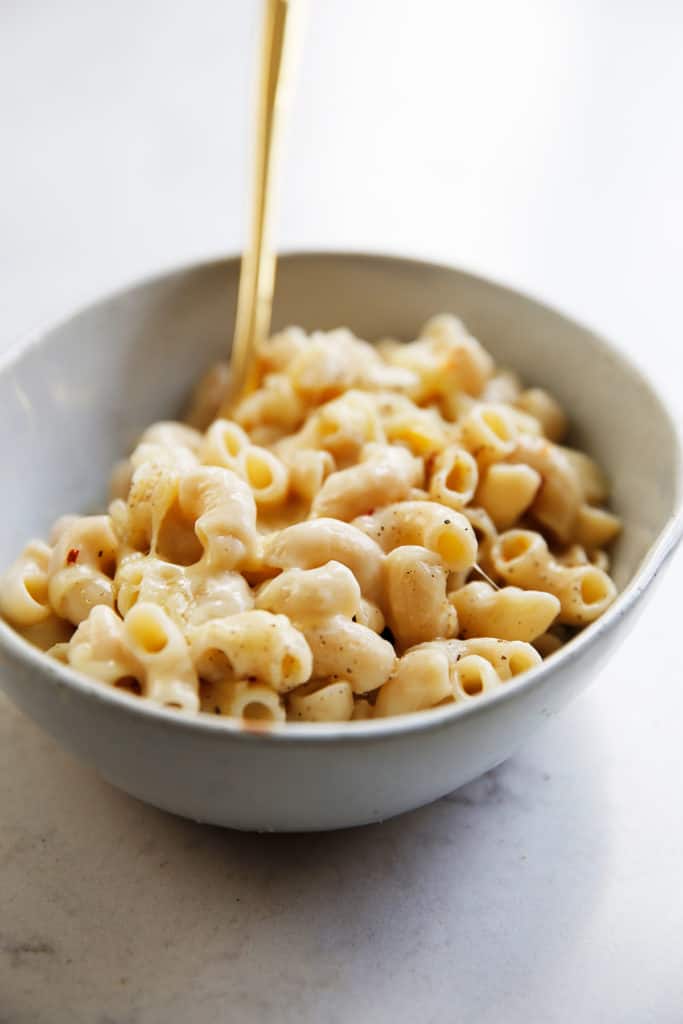

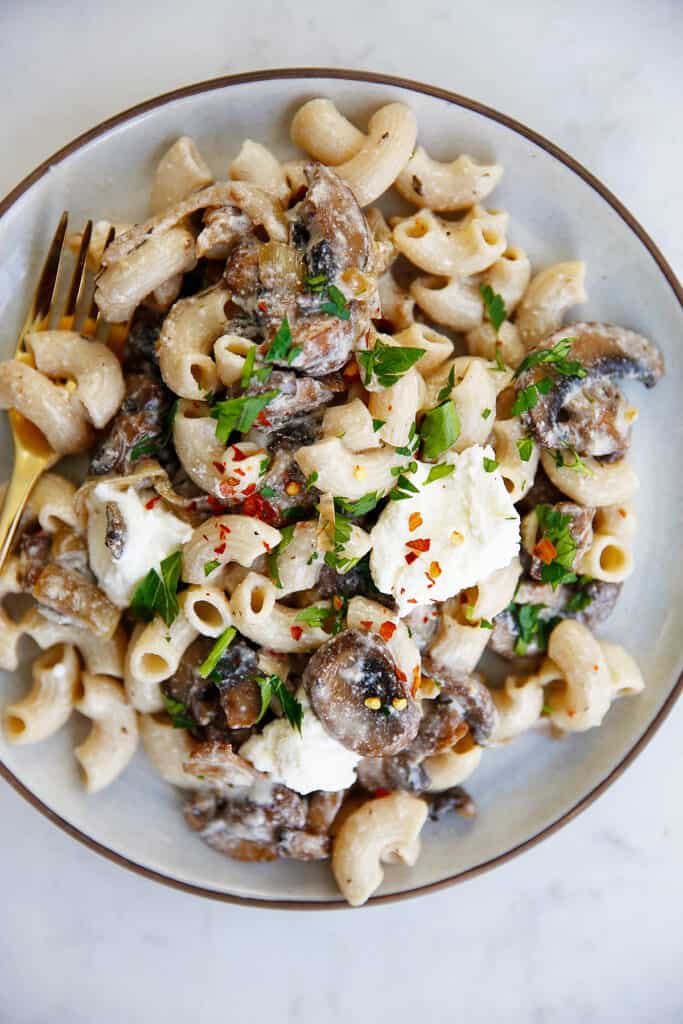



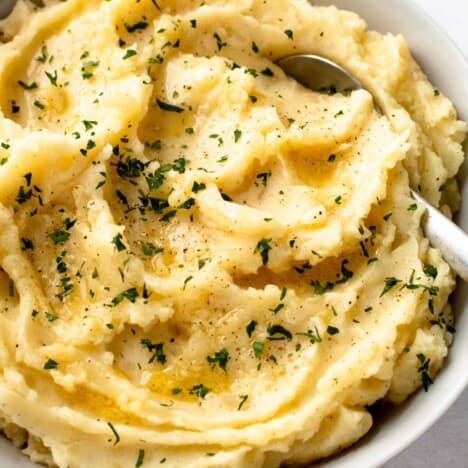


Did not work out. Ended up with a big dry pile of stuck together pasta.
so sorry to hear this kathleen! let me know if you have any questions on the recipe – it’s a really great way to make pasta.
The new instant pots don’t have a 00 option for the timer.
What do I do in this case?
Also, the newer ones have a switch to the right of the valve that allows for a pressure release.
So I’m not quite sure how to close the valve or I guess I could just leave the switch alone
Hi Lexi. Great instructions.
I haven’t tried this yet. I was wondering if you let the IP naturally depressurize longer for 10-15 minutes then opened the quick release valve if there would be less chance of any starch venting out or would this way overcook the pasta? I just got an IP with the sole goal of doing one pot meals and would like to avoid redecorating the kitchen with pasta water slime.
Also, can you cook dried pasta with water and pasta sauce, etc. or do you always have to cook the pasta separately first then add the other ingredients? That is my ultimate goal, throw everything in the pot, set it and “forget it” letting it it depressurize naturally. TY.
I’ve been trying to get creative using my Instant Pot because my gas stove heats my house so much. This worked great, used 12 oz of farfalle. Had to release slowly to avoid the starch blow, probably added a tad too much water, but overall I was extremely happy with the results.
Cooked Annie’s Mac and Cheese (small shells) in my Instapot mini as per instructions. The shells were not cooked after 3 minute natural release so we fired it up again for 0 minutes and then quick release. Done perfectly! We did strain off remaining water so I’m thinking I added too much water in the begining or it could also be the lower psi of the mini pot. I will definitely be trying this again.
SoGGY.
My gluten free brown rice pasta was completely overcooked.
Do you have any tips on how to strain this? Or scoop it all out with a strainer, drain there, and put in a collander?
Goy any ideas for diabetic meals? Roger
i used you pasta cooking instructions… boy howdy it worked beautifully… thanks
I literally just made it in this is amazing. Thank you so much for this recipe and I’m glad I found it. I didn’t have cheddar cheese so I couldn’t make a regular mac & cheese. I just wanted a simple white sauce and I came upon your recipe. It is a total hit in my house. Even my three year old who is picky loves it.
Finally… an instant pot recipe that gets it. Thank you!
I may never cook pasta the traditional way again. My stove broke and I needed to cook. Well my gluten-free pasta came out perfectly. Thanks so much
Right? 🙂 So glad.
OMG!!!!!! Cooked elbows for my mac and cheese. Went from a 40 minute plus process to 10. Turned out great and the macaroni was perfect!
This was an excellent read. I love using my Instant Pot to make quick, but tasty (healthy?) meals for the kids. More than your recipe, I appreciate your description of the learning process and special case conditions as well. thank you!
I used this technique for making macaroni and it worked great! It was a little al dente at first but after the pasta absorbed the remaining liquid it was fine.
So easy! Thanks!
=)